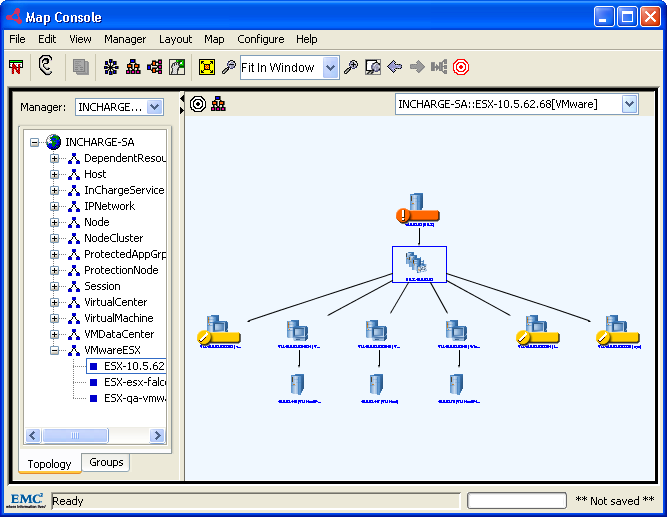The Server Manager sends a streamlined copy of its topologies to the Global Console. The Global Manager combines the Server Manager topology with the underlying transport network topology received from the IP Availability Manager. For the VMware and cluster features, the Global Console presents the topology information in a variety of formats that show the status of the network elements and their many relationships. One of those formats is the topology map, which is a graphical representation of the topology.
Topology maps are available in the Global Console’s Map Console view. Maps show relationships among topology elements, indicating the status of each element. In a map display, a node is a graphical representation of an element, and an edge is a graphical representation of a relationship or connection between elements. The Server Manager maps contain topology elements, along with their relationships and connections. The maps include:
-
VMware — Available for VMware entities, including VMwareESX, vSwicth, VirtualMachine, VMware Datastore.
-
Cluster — Available for cluster entities, including NodeCluster, ProtectionNode, ProtectedAppGrp, VMwareESX Cluster.
The map shown in Map Console — VMware relationships displays a VMwareESX server and its related virtual machines.
Figure 1. Map Console — VMware relationships 
To view the default nodes and edges that may appear in a topology map, from the Map Console, click Map > Map Legend.